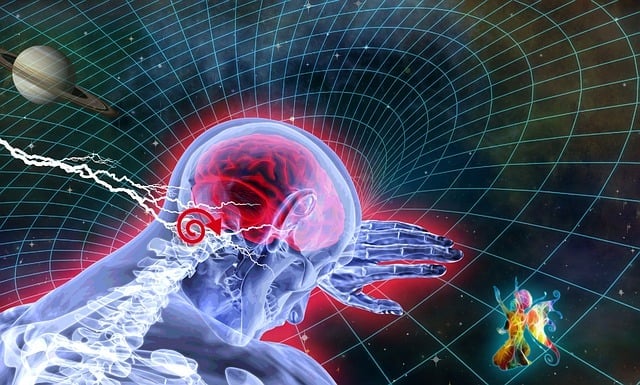A glittering hunk of crystal gets its iridescence from a highly regular atomic structure. Frank Wilczek, the 2012 Nobel Laureate in Physics, proposed quantum systems –– like groups of particles –– could construct themselves in the same way, but in time instead of space. He dubbed such systems time crystals, defining them by their lowest possible energy state, which perpetually repeats movements without external energy input. Time crystals were experimentally proved to exist in 2016.
Now researchers at Aalto University's Department of Applied Physics have, for the first time, connected a time crystal to another system external from itself. The study, first-authored by Academy Research Fellow Jere Mäkinen, describes how the team turned a time crystal into an optomechanical system that could be used to develop things like extremely accurate sensors or memory systems for quantum computers, significantly boosting their power.
The study was published on October 16, 2025, in Nature Communications: doi.org/10.1038/s41467-025-64673-8 .
'Perpetual motion is possible in the quantum realm so long as it is not disturbed by external energy input, such as by observing it. That is why a time crystal had never before been connected to any external system,' Mäkinen says. 'But we did just that and showed, also for the first time, that you can adjust the crystal's properties using this method.'
The physicists used radio waves to pump magnons into a Helium-3 superfluid cooled to near-absolute zero. Magnons are quasiparticles, i.e. groups of particles behaving as if they were individual particles instead. When the team turned off the pump, the magnons formed a time crystal that stayed in motion for unprecedentedly long, lasting up to 108 cycles or several minutes before fading down to a level the researchers could no longer observe. During the fading process the time crystal connected itself to a nearby mechanical oscillator in a way determined by the oscillator's frequency and amplitude.
'We showed that changes in the time crystal's frequency are completely analogous to optomechanical phenomena widely known in physics. These are the same phenomena that are used, for example, in detecting gravitational waves at the Laser Interferometer Gravitational-Wave Observatory in the U.S. By reducing the energy loss and increasing the frequency of that mechanical oscillator our setup could be optimized to reach down near the border of the quantum realm,' Mäkinen says.
Time crystals could be used to drastically increase quantum computing and sensing power.
'Time crystals last for orders of magnitude longer than the quantum systems currently used in quantum computing. The best-case scenario is that time crystals could power the memory systems of quantum computers to significantly improve them. They could also be used as frequency combs which are employed in extremely high-sensitivity measurement devices as frequency references, says Mäkinen.'
The researchers used the facilities of the Low Temperature Laboratory, which is part of OtaNano, the Finnish national research infrastructure for nano-, micro- and quantum technologies , and the calculational facilities of the Aalto Science-IT project.






